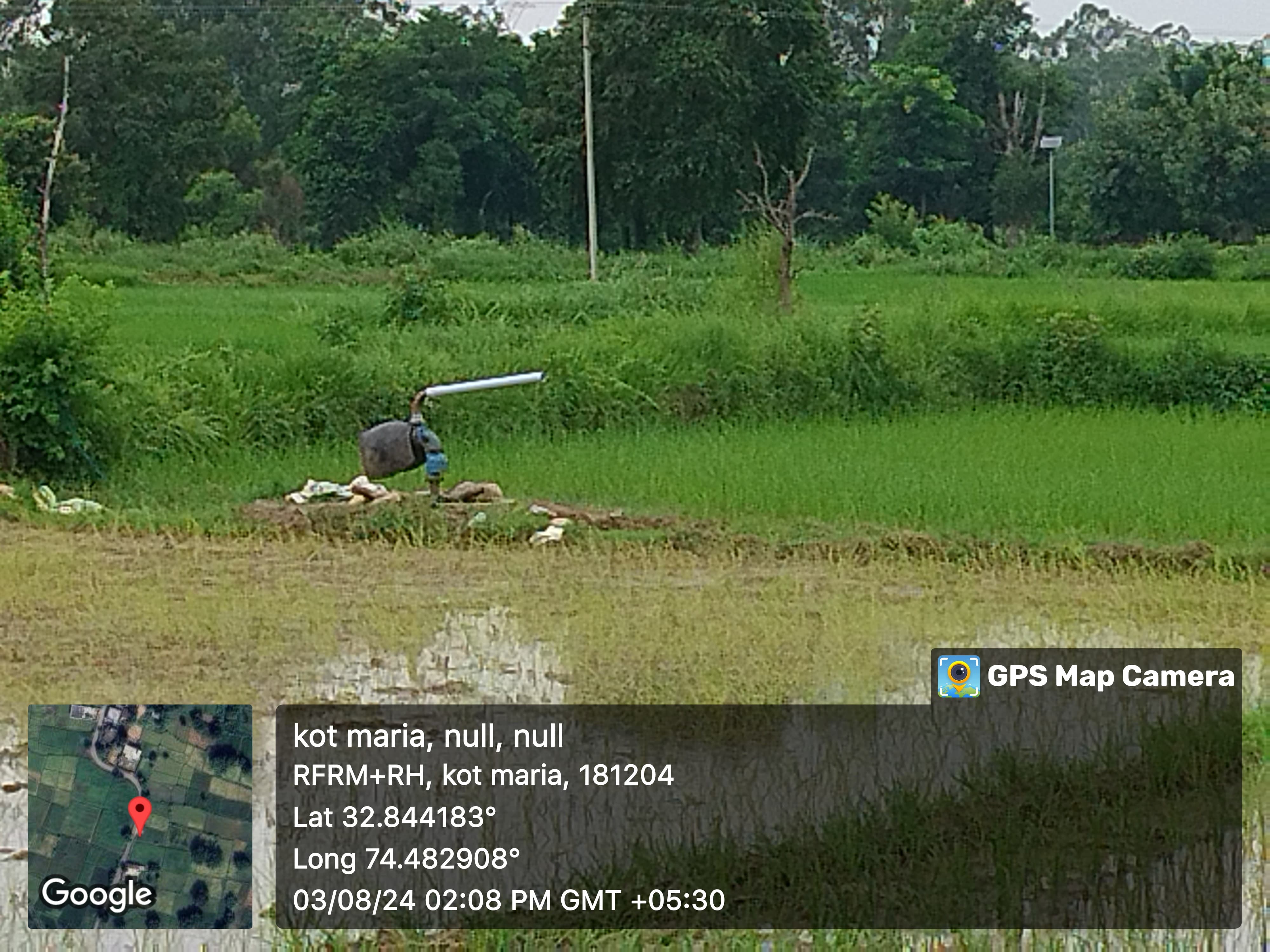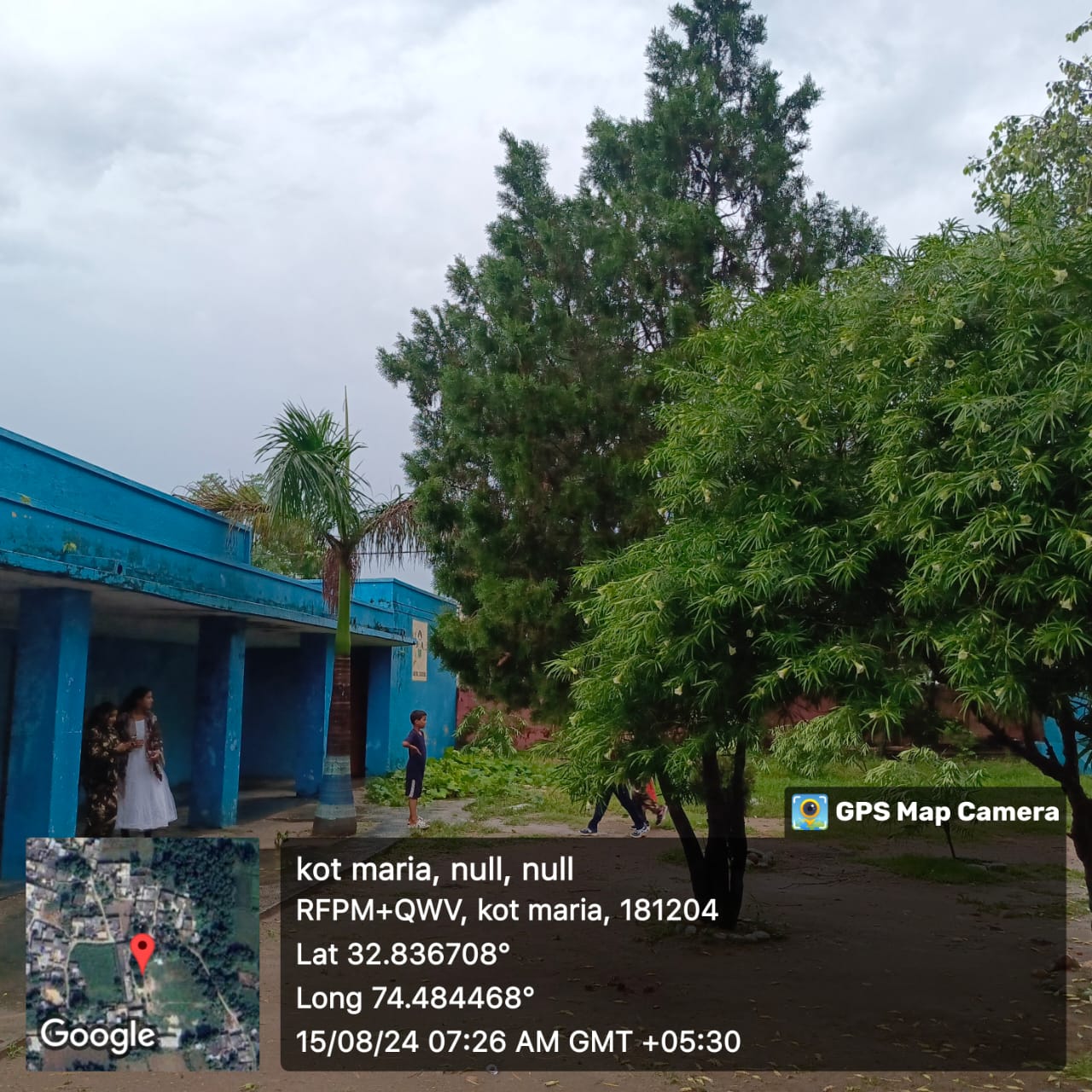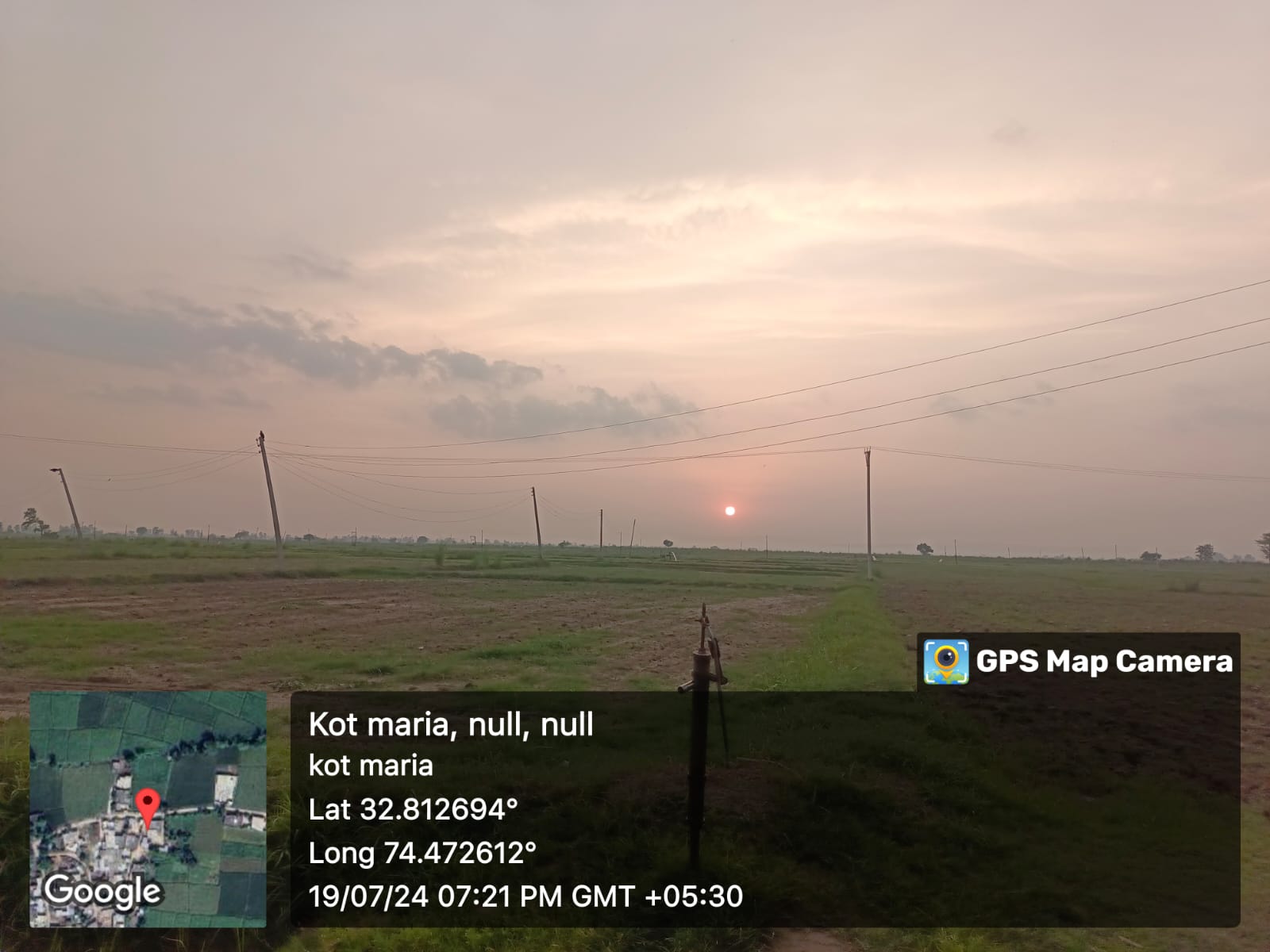Description
Kot Maira Village Overview
Kot Maira, also sometimes written as Kot Mari or Kot Mariya, is a small yet culturally rich village situated in the Akhnoor tehsil of Jammu district in the Union Territory of Jammu and Kashmir, India. The village lies amidst the picturesque landscapes of Jammu, with fields, hills, and rivers that define the region's natural beauty. Kot Maira has retained much of its traditional charm and rural lifestyle, reflecting the rich cultural heritage of Jammu and Kashmir.
Location and Geography
- District: Jammu
- Tehsil: Akhnoor
- Coordinates: Located near the Chenab River, a major river in Jammu that flows towards Pakistan.
- Proximity to Cities: Kot Maira is about 28 km from Jammu city and is close to Akhnoor town, which is around 10-15 km away.
Kot Maira’s surroundings are known for lush agricultural lands, forested areas, and rolling hills typical of Jammu’s landscape. The presence of the Chenab River nearby adds to its natural beauty, creating a serene environment. The region experiences a temperate climate with relatively cool winters, mild summers, and seasonal monsoon rains that support agriculture.
Historical Significance
Kot Maira lies near Akhnoor, a town with historical roots that go back centuries. Akhnoor is believed to have links to the Indus Valley Civilization, with archaeological sites showing evidence of ancient habitation. Artifacts and ruins of Buddhist stupas, Hindu temples, and ancient structures have been discovered, hinting at a diverse cultural and religious past.
The village itself, like many others in the area, has been shaped by historical influences, with traditions that reflect ancient Jammu heritage. Stories and folklore about ancient battles and historical figures are passed down through generations, giving Kot Maira a sense of belonging to the broader historical tapestry of Jammu and Kashmir.
Demographics and Community Life
- Population: The village has a modest population, with residents primarily belonging to Hindu and Sikh communities, reflecting the religious demographics of the Jammu region.
- Languages Spoken: Dogri is the primary language spoken, followed by Punjabi and Hindi. Urdu, given its historical importance in Jammu and Kashmir, is also understood by many.
- Family Structure: The community is close-knit, with extended families often living together. Elders play a significant role in family and social decisions, and respect for traditions is central to the village culture.
People in Kot Maira generally lead a simple life, with a daily routine centered around farming, family responsibilities, and community events. Social gatherings and festivals are important aspects of life, bringing families and neighbors together in celebration and mutual support.
Cultural Traditions and Festivals
Residents of Kot Maira celebrate a range of festivals that are significant in Jammu and Kashmir. These include:
- Lohri: Celebrated with bonfires and gatherings in January, Lohri marks the end of winter and the beginning of the harvest season.
- Baisakhi: A major festival in April, Baisakhi is celebrated with enthusiasm, especially by the Sikh community, marking the start of the harvest and the Punjabi New Year.
- Diwali: Known as the festival of lights, Diwali is celebrated with decorations, prayers, and fireworks.
- Eid: With the presence of a few Muslim families nearby, Eid is also celebrated, reflecting the cultural diversity of the region.
Folk Music and Dance: During festivals, traditional Dogri folk music and dance forms like Kud and Hiran are performed. These performances are vibrant expressions of Jammu's culture and are accompanied by traditional instruments such as the dhol and flute.
Marriage and Social Customs: Weddings in Kot Maira follow traditional Dogra customs, often lasting several days and involving rituals, singing, and community gatherings. The attire for weddings and festivals includes traditional salwar kameez, turbans, and sarees, which showcase the colorful heritage of Jammu and Kashmir.
Local Economy and Agriculture
- Primary Occupation: Agriculture is the main occupation, with the fertile land supporting crops like wheat, rice, maize, and pulses. Seasonal vegetables and fruits, such as tomatoes, potatoes, and mangoes, are also cultivated.
- Irrigation: The proximity to the Chenab River and local streams allows for basic irrigation. However, the village still depends on monsoon rains for much of its agricultural productivity.
- Animal Husbandry: Many households also keep cattle, goats, and poultry. Milk production contributes to the local economy, and dairy products like yogurt and ghee are commonly produced and consumed.
- The village economy is largely self-sustaining, with villagers growing most of what they need. Small-scale businesses such as local shops provide essential goods. Younger generations, however, sometimes move to nearby towns and cities in search of broader employment opportunities.
Infrastructure and Public Facilities
- Education: Kot Maira has access to primary and secondary education. There are small government schools within the village, while higher education and specialized institutions are found in Akhnoor or Jammu. Many students commute to these nearby towns for better educational opportunities.
- Healthcare: Basic healthcare facilities are available locally, typically in the form of a government dispensary. More advanced medical care requires travel to Akhnoor or Jammu, where hospitals and clinics offer a broader range of services.
- Transportation: Kot Maira is connected by local roads to Akhnoor and Jammu, with buses and shared taxis being common forms of transport. Private vehicles are also used by residents for convenience.
- Electricity and Water Supply: The village has basic electricity and water services, though outages and interruptions can occur, especially during adverse weather conditions. Wells and boreholes are commonly used for drinking water.
Tourist Attractions and Nearby Sites
Kot Maira benefits from its proximity to several notable landmarks and scenic spots:
- Akhnoor Fort: Located on the banks of the Chenab River, this fort dates back to the 18th century and has been an important site for both defense and cultural gatherings.
- Chenab River: Flowing close to Kot Maira, the Chenab River provides a picturesque location for picnics, fishing, and other recreational activities. It is a cherished part of local life, used for religious rituals and festivals.
- Ancient Buddhist Stupas: Archaeological remains of stupas have been discovered near Akhnoor, indicating the historical Buddhist presence and the region’s connections to ancient trade routes.
- Natural Beauty: Kot Maira’s rural surroundings include green fields, hills, and forest patches that offer an idyllic escape. Villagers and visitors alike enjoy the peaceful environment, which is ideal for nature walks and family outings.
Developmental Challenges
Kot Maira, like many rural areas, faces challenges in terms of development and access to resources:
- Infrastructure: Despite having basic facilities, the village needs improvement in road quality, consistent electricity, and reliable water supply.
- Employment Opportunities: Limited local job prospects mean that younger villagers often migrate to Jammu or other cities for work. Agriculture alone does not fully meet the economic needs of the population.
- Education and Healthcare: Although primary education is available, higher educational and healthcare facilities require travel to nearby towns. Efforts to establish better local schools and health centers would greatly benefit the residents.
Life and Lifestyle
The villagers lead a life marked by simplicity and community interdependence. Daily routines are structured around farming, household chores, and communal activities. Youngsters help in the fields and household work, while the elderly are highly respected and often sought for advice.
Food and Cuisine: The cuisine in Kot Maira is influenced by traditional Dogri food. Staple foods include wheat and rice, with popular dishes like rajma (kidney beans), aloo paneer, and Dogri-style curries. During festivals, sweets such as kheer (rice pudding) and halwa are commonly prepared.
Attire and Traditions: Traditional clothing is worn daily, especially by the older generation. Men often wear kurtas and turbans, while women wear sarees or salwar kameez. Clothing is modest and reflects the cultural values of the region.
Future Prospects
Kot Maira holds potential for future development in tourism, agriculture, and small-scale industries. Due to its proximity to historical and scenic areas like Akhnoor Fort and the Chenab River, the village could benefit from eco-tourism and cultural tourism if developed thoughtfully.
Investments in educational infrastructure, healthcare, and skill development would provide better opportunities for residents and prevent the migration of younger generations. Government initiatives aimed at rural development could improve the quality of life and economic resilience for the village.
Summary
Kot Maira is a village that reflects the traditional lifestyle of Jammu with a blend of cultural richness, historical roots, and natural beauty. The simplicity of rural life is complemented by a strong sense of community and tradition. Although the village faces developmental challenges, it possesses untapped potential in terms of tourism and rural development, offering a glimpse into the authentic life of Jammu’s countryside.
The village embodies a quiet yet resilient spirit, balancing its heritage with the hope for a better, more connected future.
Photos
Videos
Location Map
Contact Information
| Address |
kot maria,akhnoor jammu,pincode-181203 |
| Phone Number |
7051103529 |
| Email Address | |
| Website | https://jkpanchayat.jk.gov.in/profile.php?panchayat=Kotmaira%20Lower&block=Khour |
























